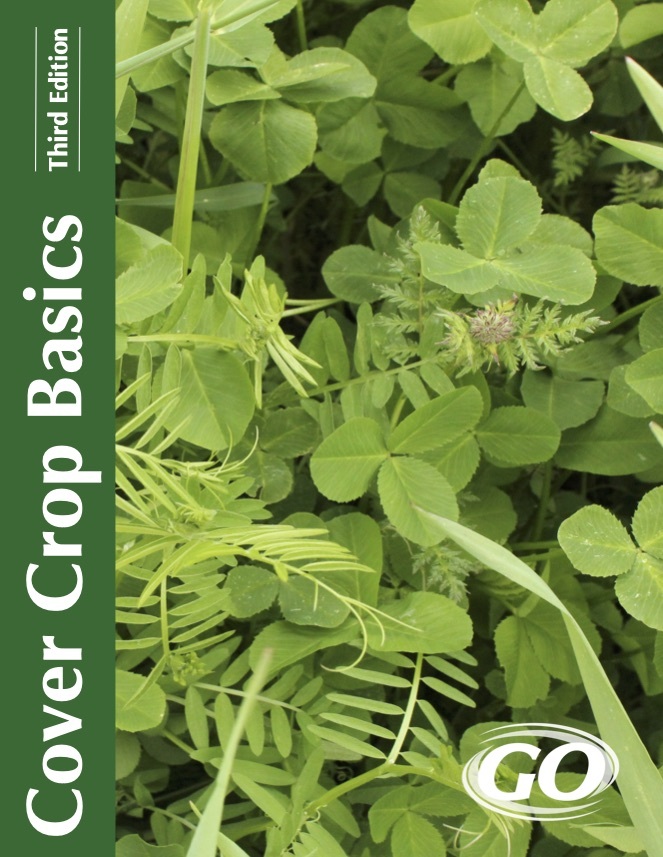Quantifying the benefits of legume cover cops
Red clover, when interseeded (or frost-seeded) with winter wheat offers potential for economic return in the form of N credits, rotational yield bump and the potential for harvest as forage,
Red clover, when interseeded (or frost-seeded) with winter wheat offers potential for economic return in the form of N credits, rotational yield bump and the potential for harvest as forage,
Crop residues are potential biofuel feedstocks, but residue removal may reduce soil carbon (C). The inclusion ofa cover crop in a corn bioenergy system could provide additional biomass, mitigating the
Spring-planted green manure cover crops may provide a nitrogen (N) benefit to a subsequent sweet corn (Zea mays L.) crop, but spring growth and lack of consistent benefits documented in
Incorporating leguminous cover crops into vegetable rotations is known to improve soil quality and increase nitrogen availability to subsequent crops but it can be difficult for small vegetable growers to
Orchardists in Washington are experimenting with growing legumes in orchards to produce a sustainable source of nitrogen. This practice was common prior to the availability of commercial fertilizer, and is
Grain farmers of Spokane and Lincoln Counties, WA, want to improve soil health on their land without compromising cash crops that are proven for this area, which depends heavily on
Cover crops provide environmental and economic benefits to agricultural systems- reducing soil erosion, increasing soil organic matter, managing soil moisture, controlling weeds, increasing biodiversity, cycling nutrients, and increasing water infiltration.
Cover crop benefits include nitrogen accumulation and retention, weed suppression, organic matter maintenance, and reduced erosion. Organic farmers need region-specific information on winter cover crop performance to effectively integrate cover
Cover crops have the potential to provide many soil health and crop production benefits, but their success depends upon selection and use of species and varieties adapted to the local
Multispecies cover cropping has become popular in recent years because of the multiple ecosystem benefits compared with single or double species cover cropping. However, scientific studies on the effects of
Residue management with cover crops (CC) can conserve soil moisture and thus has a potential to increase crop yield, but its effectiveness varies significantly by region and cropping system management.
The objective of this study was to determine the effect of organic cover cropping systems on subsequent kale biomass production and nutrient composition (protein, mineral, and prebiotic carbohydrate concentrations) and
The use of cover crops can have a significant impact in reducing nutrient losses in fields and affecting overall nutrient availability in soils. Speakers in this session will share some
In managed agricultural systems, species can be chosen to ensure that plant mixtures contain functional traits that contribute to achieving agronomic and environmental goals. Moreover, many diversification practices, such as
A key benefit of cover crops is their ability to supply plant-available nitrogen (PAN) for the following crop. PAN consists of ammonium-N + nitrate-N. The PAN provided by a cover
Multiple studies reported to the Midwest Cover Crop Council showing best practices for cover crop use in North Dakota row crop operations.
Winter annual cover crops have been used in rotation with summer crops for many years in North Carolina, but now there are some interesting new applications of this practice. Early
Winter annual cover crops have been used in rotation with summer crops for many years in North Carolina, but now there are some interesting new applications of this practice. Early
There is growing interest in the use of short-season summer annual legumes or grasses as cover crops and green manures in vegetable production systems. Cover crops can provide a significant
Cover crops are the work horses of a vegetable crop rotation. They do the heavy jobs of adding organic matter, supplying nitrogen, and suppressing weeds. However, the biomass these allies
Have you received your free copy of the NEW Cover Crop Basics, 3rd Edition? Order for yourself, your neighbor, or your soil health event today!
